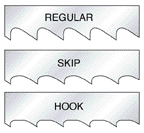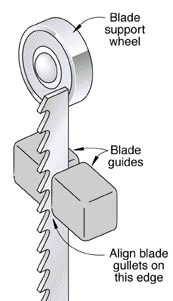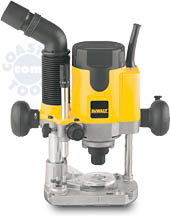SPLINTERS
Tennessee Valley Woodworkers
 Vol. 16/ Issue8
August 2001
Editor: Tom Gillard Jr.
Vol. 16/ Issue8
August 2001
Editor: Tom Gillard Jr. 

Meeting Notice:
The next meeting of the TN Valley Woodworkers
Will be held, August 21 at 7:00 p.m. in the
Duck River Electric Building, Decherd, TN
All interested woodworkers are invited!


The following people have agreed to serve as contacts for their particular
skills. If you have questions, suggestions
for activities, or other comments relating to these skills, please
call these folks. Their interest is to help the
club better serve their area of expertise. Your participation
with them will help them achieve that goal.
Alice Berry 454-3815 Design
Phil Bishop 967-4626
Finishing
Tom Church 967-4460 Turning
Harry May 962-0215
Carving
Bob Reese 728-7974 Sharpening
Jim Van Cleave 455-8150 Joinery
Maurice Ryan 962-1555 Health and Safety

Calendar of Events
Event
Date
Coffee County Fair
9/20-22
Fall Seminar 'Turning'
10-20
Christmas Party
12/7
Black Cherry
Today's woodworkers know black cherry as one of the finest cabinet
woods. Costing nearly as much as black walnut, its price reflects its reputation.
But in its use as well as its cost, some things have changed through the
centuries.
Early American craftsmen often substituted black cherry for hard-to-get
mahogany, wiping the wood with a solution of nitric acid, colored pigment,
and red wine to hasten its darkening. In its natural color, black cherry
also was popular for the paneling in Pullman cars and carriages. And because
the wood took a high polish, it frequently became the stock for caskets.
Daniel Boone was said to have made three such caskets, and in his old age
occasionally slept in one.
Yet, for all of its woodworking popularity, black cherry was better
known on the frontier for its fruit. Mountaineers mixed its juice with
rum or brandy for a bitterly pleasant drink called cherry bounce. The plentiful
bears of those bygone days also coveted the dark-purple cherries. So determined
were they to shimmy up a tree for them that pioneers knew enough to leave
the "cherry bears" alone because they became especially cranky when interrupted.
Black-cherry bark was valuable back then, too. It contains a type of
astringent acid that for generations contributed to cough and sore-throat
medicines. Even by chewing the raw bark the ailing relieved many cold symptoms.

If you want one general rule for choosing the correct bandsaw blade,
remember this: Use the widest blade with the coarsest teeth that will
make an acceptably smooth cut in your material. Here's the information
you need to apply this simple rule effectively.
The versatile bandsaw fits into the picture virtually everywhere in
woodworking. From carving
to furnituremaking, you'll find tasks that a bandsaw does best. But,
to get the most out of your
machine, you're going to have to pick the best blade for the job. Here's
how.
You need to know the tooth

You’ll commonly find three tooth
configurations: regular-tooth, skip-tooth,
and hook-tooth.
A regular-tooth (or standard) blade makes
the smoothest cut, and is the best bet for
sawing thin material. But for thick cuts and
resawing, it cuts slowly and clogs with
chips, making it a poor choice for such operations.
A skip-tooth blade, as the name suggests, has teeth slightly farther
apart and larger gaps for carrying chips away. This blade can handle
faster feed rates than the regular blade. Turn to a skip-tooth blade
for general cutting and resawing.
The teeth on a hook-tooth blade angle forward (in the direction of
rotation) at the cutting tip. That is, they have a positive rake angle.
This enables the hook-tooth blade to cut more aggressively than the
others. This blade is well suited to straight and curved cutting in
dense or hard woods
The rule for bandsaw blades
Make the blade fit your machine and your job
Bandsaw blades, like suits, boots, and deli sandwiches, come in a
wide variety, either off-the-rack or made-to-order. Many tool
dealers, home centers, and hardware stores sell ready-made blades
to fit popular saws. But some custom-make them, cutting a length
from a roll of bandsaw-blade stock and welding the ends together,
often while you wait.
In either case, you first need to know
your saw’s blade length. Install a
wrong-length blade and you may not
be able to tension it properly, which
could be hazardous to you, your saw,
or your project--maybe all three.
Check your saw’s instruction manual
for the recommended length, or
measure the factory-installed blade.
Many dealers can find the right blade
just by knowing your saw’s make and
model.
The type of cutting you’ll be doing
determines blade width, which may be from 1/16" up to 3/4" or
even larger, depending on the machine. Your saw’s manual specifies
the narrowest and widest blades recommended.

You'll strike out with the wrong pitch
For woodcutting blades, the pitch, or the number of teeth per inch
(TPI), falls between 3 and 24 TPI. Which pitch you need depends
on the thickness of the material you’re cutting.
The fewer the teeth in the wood, the faster (and rougher) the cut,
generally. To lessen the chances of blade or tooth breakage, saw
with a blade that keeps at least three teeth in the wood. More will
yield a smoother cut, but a blade with too many teeth in the wood
will cut slowly and dull rapidly. For the best balance between cutting
speed and smoothness, pick a blade that keeps 6 to 12 teeth in the
wood (see chart below).
As on other saws, bandsaw teeth are set--bent to the sides--to saw
a kerf slightly wider than the thickness of the blade body. The most
common sets for woodworking bandsaw blades are alternate and
raker, shown below.
BLADE-PITCH SELECTION
(Round to the nearest standard pitch)
Cutting Thickness
Minimum pitch
Optimum pitch
(TPI)
(TPI)
1/8"
24
24
1/4"
14
24
3/8"
10
18, 24
1/2"
6
14, 24
3/4"
4
10, 14
1"
3
6, 10
2"
3
3, 6
3"
3
3, 4
Over 3"
3
3
The raker-set blade has a repeating pattern of one tooth set to the
right, one to the left, and then one, the raker, left unset. The set teeth
cut the wood, and the rakers help clear away chips.
With an alternate-set blade,
every tooth is set either left or
right. Alternate-set blades cut
faster, and some bandsaw users
maintain that spreading the
cutting load over all the teeth
helps the blade stay sharp
longer.
Blades for big-time sawyers

Bi-metal blades,
becoming more readily
available to home
woodworkers, offer a
high-performance
alternative to standard blades.
High-speed steel (HSS) electron-welded to the edge gives
each tooth a tough tip, shown above. These blades stand up to abrasion
and
heat that would dull a carbon-steel blade quickly.
A bi-metal blade will set you back about three times the cost of a
same-size standard blade ($30 vs. $11 in one comparison). But, it
can save money (and time) in the long run by staying sharp longer
than a standard blade. That’s why we use bi-metal blades on the
14" Delta bandsaw in the WOOD magazine shop.
Tougher yet is the carbide-tipped resaw blade, at about $100. Only
if you resaw hard, abrasive woods in production quantities would
you need one of these.
Getting the most from your blade

Better cornering. For a blade that
takes tight curves smoothly, round
its back corners with a coarse
whetstone. Many dealers sell a dry
stone mounted on a handle--called
a blade-tuning stone--designed
especially to do this.
Don’t attempt re-entry. If you
replace a blade in the middle of a
cut, don’t saw into the old kerf with
the new blade. That’s a sure way to
dull the new blade prematurely.
Instead, turn the work around and
start at the other end.
Straighten up and cut right.
For accurate cutting, you must adjust the tension and blade guides
correctly.
Here’s how we do it in three simple steps:
1. Set the blade tension in accordance with your saw’s instruction
manual.
2. Adjust the tracking to bring the bottoms of the blade gullets into
line with the front of the saw’s guide pins or blocks (see illustration
above).
3. With the saw running, carefully slide the blade support toward the
back of the blade. When the blade rotates the wheel, slide the
support away from the blade just a smidgen so the free-running
blade won’t rotate the guide wheel. Tighten the setting.
Blades that won’t cut straight. A blade that continually tracks off
a cutting line in the same direction may be dull on one side. The
blade will lead toward the sharper side. The only cure: Sharpen the
blade or install a new one on the saw.
Where to buy them
Can’t find the blade you want locally? Try these mail-order dealers
for a wide variety of bandsaw blades:
Garrett Wade Co.
212/807-1155
Trend-lines, Inc.
800/877-7899
Woodcraft
800/535-4482
Woodworker’s Supply, Inc.
800/645-9292
Grizzly Tools
1-800-523-4777
Note: Manufacturers specific recommendations for use of their
products always take precedence over general tips.
Note from Jim Del Toro, Fall
Seminar chair…
The fall seminar is set for Saturday, Oct 20th.
This year's speaker will be Bobby Clemons, a nationally recognized wood
turner. He is President of the Tennessee
Association of Woodturners, a member of the Brasstown
Woodturners Guild in Brasstown, N. C., and was the founding President
of the Cumberland
Woodturners of Crossville, Tennessee. Bobby has taught classes at the
Appalachian
Craft Center, the John C. Campbell
Folk school and the Arrowmont School
of Crafts. He was featured on HGTV’s Modern Masters Christmas show
in 1999 and 2000 demonstrating his technique on turning his style of Christmas
ornament. He and his turnings were also featured in the December 2000 issue
of the “TENNESSEE MAGAZINE”. He has also been featured on the “TENNESSEE
CROSSROADS” television show on PBS stations in Tennessee. Bobby will
provide turning demonstrations on his Christmas ornaments as well as turning
salad bowl, and rough edge bowls. More details will follow in future issues
of SPLINTERS".
Mark your calendars!
ROUTER DRAWING

Just a reminder to resister at the meeting for the router drawing.
Remember that the only way you can register is to be at the meeting.
Thoughts and Prayers are needed for the following Club members:
Ben Whiteaker
Don Helton
Bob Swafford
James Lowery
Jim VanCleave sent this in:
Sharpening Stone Comparison Guide
Stone Type
US Grit
Japan Grit
Coarse Crstolon,coarse India
100
150
Medium Crystolon
180
240
Medium India,coarse diamond
240
280
Fine Crystolon,Fine India
280
360
Medium diamond
320
500
Washita
350
600
Soft Arkansas
500
1000
1200
Hard White Arkansas,
Fine Diamond,medium
black Ceramic
700
2000
Hard black Arkansas
900
4000
Ultra white Ceramic
6000
from p.73, July Woodcraft catalog.
The July meeting of the Tennessee Valley Woodworkers was called to order
by President Tom Cowan.
We had 58 present.
Our visitors were: Don Newsom, Jim Parker and Raymond Thompson
Show and Tell:
Billy May_ carving of a wood spirit
Bob Reese_ sharpener for turning gaug
Bob Leonard_ samples of wood species
Manuel Brown_ segmented bowl
Tom Church_ Box Elder bowl he had bleached.
Jim Van Cleave_unusual shaped box, octagonal wooden candy
dish.
Josef Maierbacker_ Caucasion walnut bowl from Germany.
Dean Lutz- Corian goblet
Andy Butterfield_ carved cane
Ross Roepke_ Red Oak Stickley bed
Matt Brothers_ Mahogany china cabinet
Program: Bob Leonard, Doyle McConnell had an
impromptu discussion on repairing tools and sources for equipment
and repairs.
Until next month!
Shirley Bishop

WEB
SITES of INTEREST
Arrowmont
School of Arts and Craft
WOOD
ONLINE newsletter
Falls Mill
Appalachain
Center for the Arts
Forest
Products Lab. 1999 Wood Handbook
Jim DelToro
Highland Hardware
Woodworker's
Journal
Steve
Graham's Page
WOOD
ONLINE TVWW page


Saw Blade Sharpening Services: Branching Out is now offering their
services as a drop off spot to have your saw blades sharpened. The
blades will be picked up (Tuesdays), sharpened, and dropped back off at
Branching Out. The Leitz Tooling Systems out of Collierville, TN
will do the sharpening. Call (393-0525) or stop by for details.
Webmaster:
Tom Gillard Jr.

 Vol. 16/ Issue8
August 2001
Editor: Tom Gillard Jr.
Vol. 16/ Issue8
August 2001
Editor: Tom Gillard Jr. 
![]()
![]()
![]()
![]()








